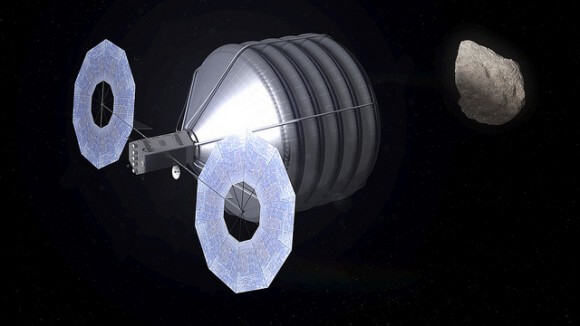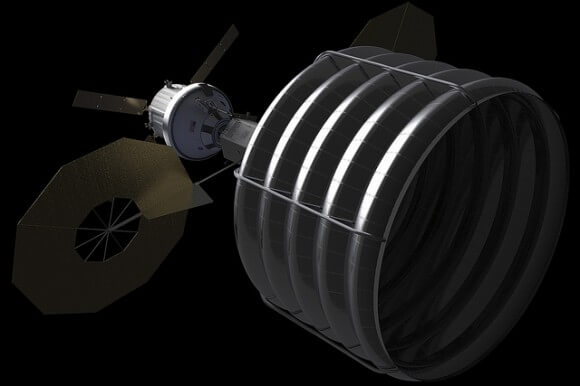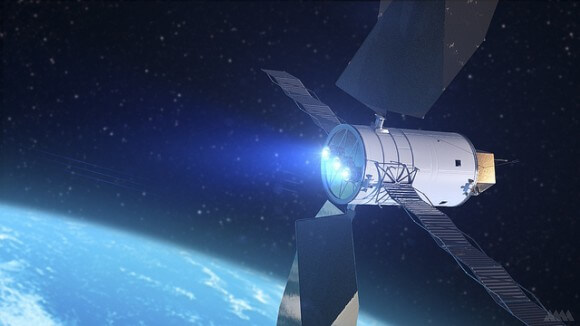NASA's 2014 budget proposal includes a plan to capture a small near-Earth asteroid with an unmanned spacecraft and safely return it to a stable orbit around the Earth and Moon system where astronauts can visit and study it.

NASA's 2014 budget proposal includes a plan to capture a small near-Earth asteroid with an unmanned spacecraft and safely return it to a stable orbit around the Earth and Moon system where astronauts can visit and study it.
A spacecraft will capture the asteroid, whose identity has not yet been determined, but at most it will be an asteroid with a diameter of up to 7 meters - in 2019. After that, a team of four astronauts who will take off in the Orion spacecraft will meet with the space rock in 2021, and will perform spacewalks in order to study it.
NASA has released new photos, a video and more information about the mission. According to the agency, carrying out all the elements of the proposed mission "will combine the best of NASA's science, technology and manned launch capabilities and challenge the innovation capacity of America's brightest scientists and engineers."
The mission will combine existing technologies with capabilities currently being developed to discover an asteroid large enough to pose a threat to Earth and a small asteroid that could be a candidate for the mission. NASA says that the initiative will help accelerate technological development efforts in the field of solar-electric propulsion and utilize the launch system and the Orion spacecraft that are being built these days "to help keep NASA mission-focused and fulfill the president's vision of sending a man to Mars in the XNUMXs."
Additional data provided by NASA
When the astronauts put on their spacesuits and take a spacewalk on the surface of the asteroid, how they will move and drop samples of it based on years of knowledge accumulated by NASA scientists and engineers who assembled and operated the International Space Station, evaluated innovative concepts for robotic missions, launched scientific spacecraft and characterized objects close to the earth, and also performed tasks from the ground."

Back in the seventies of the 20th century, NASA was investigating possible ways to use existing equipment to visit an asteroid and better understand the characteristics of asteroids. At the International Space Station, scientific research and technological development has improved our knowledge of the ability of humans to live and work in space. The agency also explored various asteroid flight options to define the capabilities needed to push the boundaries of space exploration.
During the first flights of the space shuttle and the assembly of the space station, NASA relied on equipment tests both in space and on Earth to search for new ideas for conducting simulation experiments that simulate the complexity of working in space.
During 16 missions at sister agency NOAA's Aquarius underwater base off the coast of Florida, aquanauts tested techniques for manned space exploration. These underwater tests relied on the experience of training astronauts in the huge pool at the Johnson Space Center in Houston where simulations of the assembly and maintenance of the space station were conducted.
The extreme environment missions NEEEMO 15 and 16 in 2011 and 2012 simulated some of the challenges astronauts will experience when they visit an asteroid, including how to dock with it and how to move around its surface and collect samples.
NASA also performed an asteroid mission simulation as part of ground studies conducted at the Johnson Space Center in 2012. During the simulation, the team evaluated how the astronauts would be able to perform a spacewalk on an asteroid and achieve other goals. While a spacewalk on the captured asteroid will require the use of different techniques than those performed in the simulations, decisions have been made about the best way to sample the asteroid.

In recent scientific missions, NASA also studied the nature of asteroids to provide fuel for the origin of the solar system. From the Pioneer 10 spacecraft, which was the first in 1972 to pass and study the main asteroid belt, to the DAWN mission, which recently completed the study of the asteroid Vesta and is now on its way to the dwarf planet Ceres, they help both to understand the origin of the solar system and to make an informed decision about the way in which missions to bodies can be carried out other planets. Scientists both at NASA and around the world also continue to study asteroids to learn about their unique properties.
As NASA continues to reach farther and farther into the solar system, the agency continues to conduct simulations and evaluate operations and technology concepts for visiting an asteroid.

One response
Couldn't the asteroid rotate around itself at high speed?